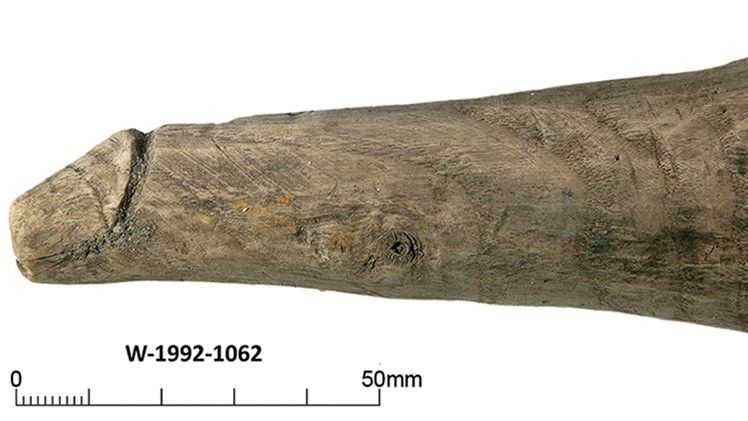United Nations quirky wooden object discovered in Vindolanda (UK) in a 2nd century Roman fort could have been used as sex objects By the Romans 2,000 years ago. When the element of 160mm was found in 1992it was thought to be a darning toolbecause he was next to multiple shoes, clothing accessories and other handicrafts.
Another theory was that it was used from an object of good lucksince in the Roman empire the representation of phalluses as a result of the common belief what use would they be protection against bad luck. Without going any further, the same ruins of Pompeii They are full of representations of male virile members: facades, floors, mosaics, doors…
However, a study made by the University of Cambridge has determined that it is first example of a wooden phallus from Roman times (isolated from the rest of the body) that has been found world level.
an ambiguous use
In the article in question, published in the journal ‘Antiquityby archaeologists Rob Collins and Rob Sandsdetermines that the object could have three possible uses.
The first hypothesis, and more plausible, suggests that it would be a sexual object, because the ends of this are softer than the rest of the figure, a fact that shows that it was extracted from repeatedly over time.
As a second option, it could be used as mortar for food, cosmetics or medicinal treatments. Finally, it is possible that he exercised the function of lucky phallus, that would be placed on a statue so that people passing by would touch it for protection.
Related news
However, this last option is the one that seems least likely since, if so, it would be worse preserved for being placed outside of an important building.
Furthermore, in other article published by the University of Newcastle (UK) About this same investigation, Collins adds that the fact that the object is carved in wood sows many doubts about its use. «We cannot be sure of its use, in contrast to most other phallic objects that make symbolic use of that shape for a clear function, such as a good luck charm, We know that the ancient Romans and Greeks used sexual implements; this object from Vindolanda could be an example of one.” concludes.

